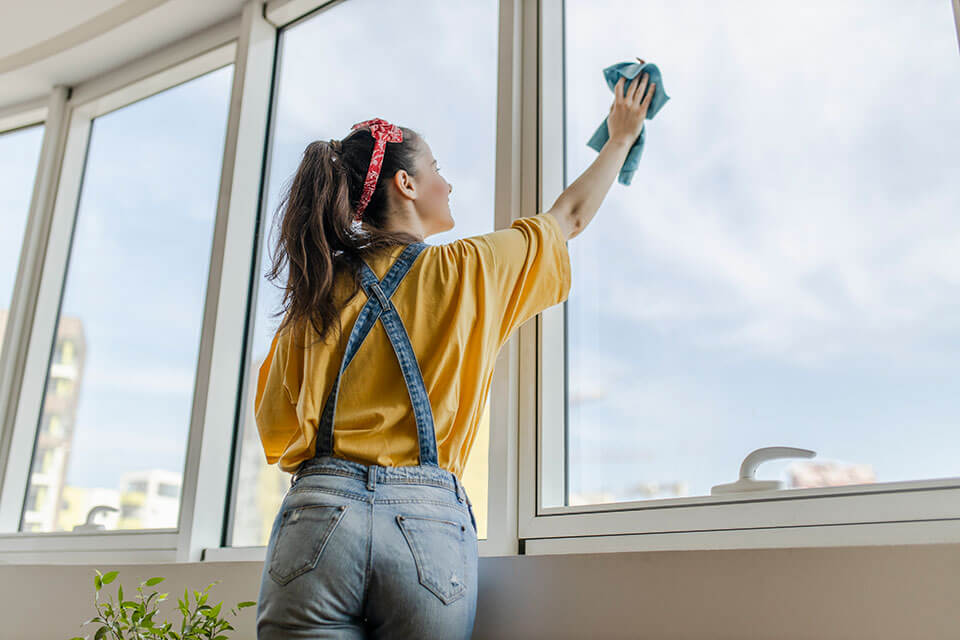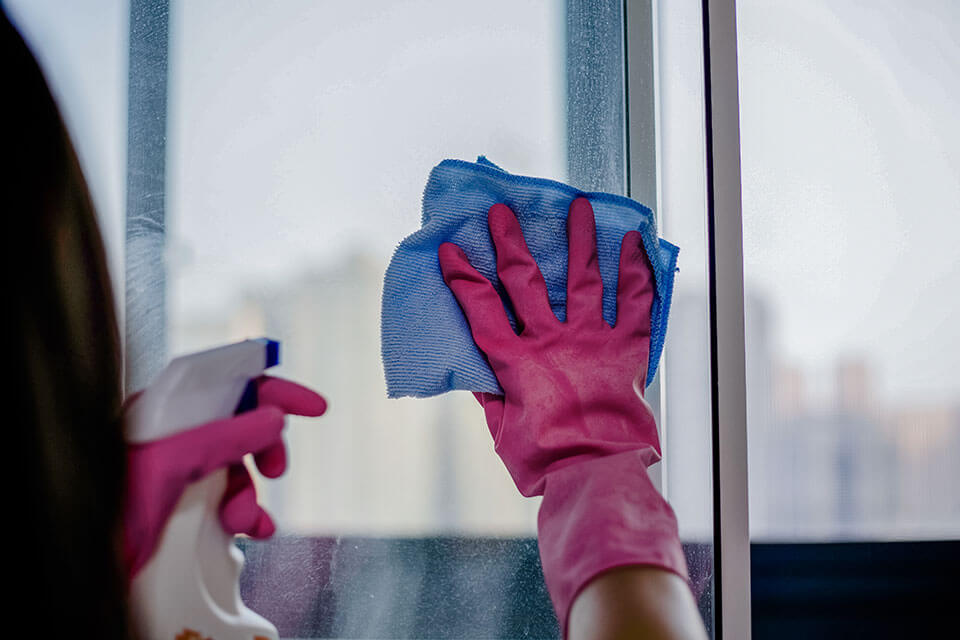Table of contents:
- When is the best time to clean windows?
- What to use for cleaning windows?
- How to clean windows? The order of cleaning
- How to polish windows?
- How to prepare for window cleaning?
When is the best time to clean windows?
When planning a window cleaning operation, it is a good idea to check the weather forecast for the day of cleaning in advance. Above all, it is important to avoid washing when it is freezing outside. When the temperature drops below 0°C, window cleaning can even result in cracked glass!
Warm, sunny days are also not the best time to clean windows. Intense sunlight causes the glass cleaner to evaporate and dry quickly, leaving unsightly streaks and spots on the glass surface.
The best time to clean windows is on a moderately warm and slightly cloudy day, or in the late afternoon when the sun is no longer shining so intensely. This will reduce the likelihood of streaks forming on the windows.
What to use for cleaning windows?
The most common way to clean windows is to use a special glass cleaner and paper towels, a clean microfibre cloth or a rubber washer. However, most depends on the liquid used. Poor quality ones can leave unsightly smudges and streaks. It is therefore worth choosing a good glass cleaner.
Instead of a special glass cleaner, ordinary dishwashing liquid can also be used. A small amount of it should be dissolved in a bowl of warm water. Then simply apply it to the glass and wipe dry thoroughly.
If you don’t want to use chemicals, a mixture of lemon juice and water can be used to clean windows. The best proportion is half a glass of juice to a glass of water. Such a product, in addition to cleaning the windows, will give the interior a pleasant lemon fragrance. Alternatively, lemon juice can be replaced by a mixture of vinegar and water. It is worth using this solution when the windows have not been cleaned for a long time and are heavily soiled. There is no need to be afraid of an unpleasant smell – vinegar evaporates quickly, so there should be no trace of it after only a few minutes. Besides being highly effective, cleaning windows with vinegar has another advantage – low cost.

How to clean windows? The order of cleaning
Window cleaning should be started by carefully vacuuming the window panes and their surroundings to remove any dirt, cobwebs, dust particles or insects that might have accumulated.
After vacuuming, it is time to move on to cleaning frames and window sills. A common mistake is to start with the panes right away, but in this way they can get additionally dirty and splashed. So first the inner frames should be cleaned, and then you can move on to washing the outer frames and the outer sill.
After this the glass should be washed and polished. If necessary, you can dry wipe the frames and sill once more.
How to polish windows?
To polish windows it is good to use ordinary kitchen paper towels, although they may leave white particles on the glass. In the past, a popular solution was to use old newspapers. In this situation, however, care should be taken that the newsprint is not too rough, as this can cause micro-scratches on the surface of the glass. In addition, ink from moistened newsprint can stain windows and hands.
Absorbent microfibre cloths are best for polishing glass. By using them it is possible to remove excess water, polish the glass and avoid additional dirt or scratches. In case you don’t have a microfibre cloth available, old nylon tights can come in handy!

How to prepare for window cleaning?
We have already mentioned that you should avoid frosty or sunny, warm days when planning to clean your windows. We have also indicated the best order of washing. What else should be avoided?
When we undertake window cleaning, we must be aware that it is a long-lasting and exhausting activity. So it’s worth planning it well in advance. So cleaning windows after a tiring day is not the best solution.
It’s also good to clean windows regularly, at least twice a year. The dirtier the windows, the more difficult they are to clean later. It is worthwhile, therefore, to adapt the cleaning agents in advance to the level of soiling.



